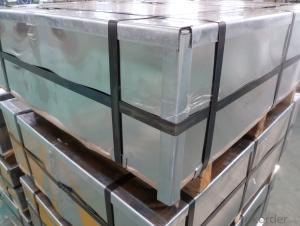Prime quality tinplate for caps and bottom
- Loading Port:
- China Main Port
- Payment Terms:
- TT OR LC
- Min Order Qty:
- -
- Supply Capability:
- -
OKorder Service Pledge
OKorder Financial Service
You Might Also Like
Prime Quality Tinplate Sheets Details:
Minumum Order Quantity: 25 ton Unit: m.t. Loading Port:China Main Port
Supply Ability:10000tons per month Payment Terms:TT or LC
Product Description:
Prime Quality Tinplate Sheets Usage and Applications
Prime Quality Tinplate Sheets is used for making tea cans ,painting cans ,chemical package cans ,food package cans, electrical cable ,battery and metal printing etc.
Prime Quality Tinplate Sheets Specifications
Standard : GB2520-2000 ,JIS G3303
Steel type : SPCC
Coating : 2.8/2.8
Surface: Bright, Stone ,
Thickness:0.18
Width :600MM~1000MM
Temper : T1~T5
Package: tinplate wrapped completely with an inner cover of plastic or waterproof papers with vorners protected with metal angels.
- Q: How does tinplate perform in terms of heat resistance?
- Tinplate has a relatively low heat resistance compared to other metal materials. It can withstand moderate temperatures without significant deformation or damage, but it is not suitable for high-temperature applications.
- Q: How does tinplate contribute to the presentation of jewelry?
- Tinplate is often used in the packaging of jewelry, such as boxes or containers, which enhances the presentation and adds an element of luxury. Its glossy and reflective surface provides a visually appealing backdrop for showcasing the beauty and intricacy of the jewelry inside. Additionally, tinplate offers excellent protection against corrosion and moisture, ensuring the longevity and preservation of the jewelry.
- Q: What are the main applications of tinplate?
- The main applications of tinplate include food and beverage packaging, aerosol cans, electrical components, and decorative items.
- Q: Can tinplate packaging be used for toy products?
- Yes, tinplate packaging can be used for toy products. Tinplate is a durable and versatile material that provides a protective barrier, making it suitable for packaging various types of toys. Additionally, tinplate can be easily printed on, allowing for attractive and customized designs for toy packaging.
- Q: Can tinplate be used for signage and advertising purposes?
- Yes, tinplate can be used for signage and advertising purposes. It is a versatile material that can be easily customized, printed on, and shaped into various forms and sizes. Tinplate offers durability, weather resistance, and a professional appearance, making it suitable for outdoor and indoor signage, as well as promotional displays and advertising campaigns.
- Q: What are the main trends in the tinplate industry?
- The main trends in the tinplate industry include a growing demand for sustainable packaging solutions, increasing preference for lightweight and easy-to-recycle materials, advancements in technology for improved tinplate production processes, and the emergence of innovative uses of tinplate in various industries such as food and beverages, cosmetics, and electronics.
- Q: How is tinplate affected by exposure to chemicals?
- Tinplate is typically resistant to corrosion and is not easily affected by exposure to chemicals. However, certain aggressive chemicals or strong acids may cause corrosion or degradation of the tin coating over time.
- Q: What are the advantages of using tinplate for construction materials?
- There are several advantages of using tinplate for construction materials. Firstly, tinplate is highly durable and resistant to corrosion, making it suitable for both indoor and outdoor applications. Secondly, tinplate has excellent formability, allowing it to be easily shaped into various complex designs and structures. Additionally, tinplate is lightweight, which makes it easier to transport and handle during construction. Lastly, tinplate is a sustainable option as it is recyclable, contributing to the overall environmental friendliness of construction projects.
- Q: What are the different ways to seal tinplate cans?
- There are several methods commonly used to seal tinplate cans. These include double seam closure, soldering, adhesive bonding, and welding. Double seam closure is the most widely used method, where the can's lid and body are mechanically interlocked and sealed using pressure and rollers. Soldering involves melting a metal alloy to create a tight seal between the lid and body. Adhesive bonding uses specialized adhesives to bond the lid and body together. Welding involves fusing the lid and body using high heat to create a strong and permanent seal.
- Q: What are the main factors influencing the pricing of tinplate?
- The main factors influencing the pricing of tinplate include the cost of raw materials, such as tin and steel, which can fluctuate due to supply and demand dynamics. Other factors include production and manufacturing costs, including energy and labor expenses, as well as market competition and global economic conditions. Additionally, trade policies, tariffs, and regulations can also impact tinplate pricing.
Send your message to us
Prime quality tinplate for caps and bottom
- Loading Port:
- China Main Port
- Payment Terms:
- TT OR LC
- Min Order Qty:
- -
- Supply Capability:
- -
OKorder Service Pledge
OKorder Financial Service
Similar products
Hot products
Hot Searches
Related keywords




























